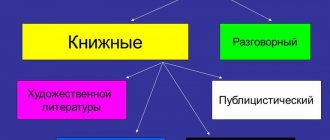List of speech therapy diseases in children
In children, speech therapy diagnoses come in two forms: physiological and pathological. Unlike pathological ones, physiological types disappear on their own up to 5 years. The sooner the diagnosis is made, the greater the opportunity to correct the preschooler’s speech.
Today, the list of speech therapy diseases for children is quite wide.
The main forms of diseases of the speech system
Dislalia. A preschooler cannot clearly pronounce some sounds with normal hearing and the absence of pathologies in the innervation of the articulatory apparatus. Physiological dyslalia may go away on its own within 5 years. Prevention consists of diligent speech development from 1 year.
Dysarthria is the incorrect pronunciation of words due to poor innervation of the speech apparatus in the posterior frontal and subcortical regions of the brain. Speech is like talking with porridge in your mouth. The cause is damage to the subcortical parts of the brain. Restricted mobility of the tongue and upper palate leads to difficulty in articulation. The pathology is treated with speech therapy methods, exercise therapy, and the development of fine motor skills of the fingers.
Note! Modeling from plasticine and playing with small objects will help here (provided that the parents are with the baby to avoid accidents).
This form of speech therapy disorder in preschool children is accompanied by the collapse of the speech system: impaired speech perception by ear, difficulty in reading and writing. In childhood, dysarthria often leads to impaired pronunciation of words, sometimes to general underdevelopment of speech. Speech deficiencies in dysarthria can be corrected with speech therapy sessions.
Rhinolalia is impaired speech as a result of the presence of congenital pathologies of the oral cavity: cleft lip, cleft palate. In most cases, speech is monotonous and slurred.
Reactive mutism is muteness resulting from nervous stress or psychological shock.
Speech therapy presentation for a preschooler for PMPK
Speech therapy presentation for PMPC
for a pupil of MBDOU "Kindergarten No. 11" in Kudymkar
(FULL NAME.), …. b.b.
Daria Kh. attends the senior group of MBDOU “Kindergarten No. 11”. She has been studying individually at the preschool speech center since January 2022. Early correctional work with the girl was difficult due to prolonged non-attendance at the preschool educational institution for various reasons.
Physical development by age. Hearing and vision are normal. The history of early speech development shows a severe delay: the appearance of the first words (“mom”, “dad”) - by 3 years; simple phrase - by 5.5 years.
The speech environment and social conditions are unfavorable. The family is large and complete (stepfather). The mother is indifferent to her daughter’s speech problems and does not pay enough attention to the child’s development. All family members are Russian-speaking.
Dasha is accessible to contacts, but her need for communication is weakly expressed. Lack of desire to communicate is associated with speech difficulties. The communicative function of speech is impaired, speech consists of individual words and onomatopoeia. Instead of missing speech, he uses gestures, facial expressions, and intonation.
The anatomical structure of the organs of the articulatory apparatus without anomalies. There are features of articulatory motor skills when performing motor tests by demonstration: the tone of the tongue is tense, the range of movements is incomplete, the transition from one movement to another is blurred. Severe hyperkinesis and salivation are not observed. The voice is ringing and intonationally expressive.
Fine motor skills are not well developed. Head performs tests selectively, his hand movements are inaccurate. Muscle tone is increased. The leading hand is the right. Holds the pencil incorrectly, the pressure is strong. Cutting with scissors is difficult. General motor skills are slightly impaired.
Speech perception and understanding are not impaired. He picks up the intonation of others well.
Dasha's own speech can be characterized as the absence of commonly used speech. The system of language means is not formed, there is underdevelopment of expressive speech, impressive speech is more developed. Speech underdevelopment is systemic.
The vocabulary is limited to everyday topics and is qualitatively inferior. The active vocabulary is significantly smaller than the passive one - these are several understandable, often used words by the girl, simple in syllable composition (“yes”, “give”, “home”, “mom”, “bye”, “there”, “Dasha”). At the request of an adult, the child tries to name the object, but the result is a sound complex of 2-4 sounds. It is impossible to repeat a reflected or conjugated word. Pronouncing a word syllable by syllable is difficult; multiple repetitions of each syllable are required. Often, instead of words-objects, he uses onomatopoeia (“yum-yum” - all products, “mu” - cow, sheep, ram, “bi-bi” - various ground transport, “mammies” - flowers, etc.). A high-quality dictionary is characterized by the absence of adjectives that describe color (indicates an object of a similar color), shape (draws with a finger), and size of objects (there are “big” and “small”). The verb dictionary is characterized by insufficiently formed ideas about the actions being performed and their differentiation. A narrowing of the meanings of words is revealed.
Violation of the sound side of speech is manifested in unstable pronunciation of hissing sounds and the absence of sounds [p]. [R']. [l]. The syllable structure is grossly disrupted. Words consisting of 1 syllable and words of 2 open syllables are available for pronunciation independently and after an adult. Phonemic hearing functions are unformed. Does not differentiate between voiced and deaf. Phonemic perception at the stage of initial formation: correctly identifies the initial vowel sound in a word.
Word change is difficult. Does not know how to use word formation tools. Understands, but does not use prepositions in speech. Uses a simple two-word sentence (“Is this here?” “Auntie, bye”, “I’m busy”, “Let’s (go) there?”). All types of coherent speech are unformed.
In a familiar environment, Dasha’s speech activity is increased: she tries to speak using facial expressions, gestures, voice and intonation. Cognitive activity is reduced. The girl's behavior in classes and in free activities is calm, with occasional fussiness and motor restlessness. She often plays alone. Self-control skills are poorly developed.
During three months of correctional and speech therapy work with the girl, the disorder was not eliminated, but slight positive dynamics were observed.
Speech therapy classes are aimed at developing the motivational basis of speech activity and independent speech. During the classes, correctional work is carried out at the lexical level, work on the syllable structure of the word. Correction of sounds is carried out in parallel.
Speech therapy conclusion:
OHP (I – II level).
Recommendations:
determination of further educational route.
04/30/2019 Teacher-speech therapist_______/________
Head of MBDOU "Kindergarten No. 11"________ /_______
Guidelines for writing characteristics for children with speech impairments for PMPK
Recommendations are drawn up in the form of a small protocol, which indicates the structure of the speech apparatus, hearing assessment, and mental health. As a result, a conclusion is made, the result is displayed and a speech therapy diagnosis is made.
Speech therapy characteristics for a child with level 3 neurodevelopmental disorders at the primary medical complex
Vetvitskaya Anastasia goes to Kindergarten No. 14. Speech is not developed correctly, she cannot pronounce the sounds K, G, D, T. The motor skills of her fingers act passively and do not obey. Parents did not suffer from speech pathology in childhood. The right hand predominates in movements over the left. The facial structure complies with the norms. The task of frowning eyebrows and wrinkled cheeks is poorly performed. Facial muscles are poorly developed.
The structure of the mouth. Language. The root is in a tense state, the tip is passive, flaccid, the general structure corresponds to the norm.
Speech is incomprehensible, monotonous, voice is ringing. In the task to repeat a sentence, he misses syllables and does not pronounce some letters. Has a small vocabulary, misses pronouns in communication, and may confuse prepositions in tense.
Do parents in kindergarten need consultations on speech therapy?
Result: observation showed that the child has a level 3 speech disorder.
Speech therapy characteristics for a child with level 2 neurodevelopmental disorders at primary care
Denis Tukonov is in the senior group, his family is complete, his parents have higher education. The presence of speech pathologies was not identified.
Motor skills are poorly developed, movements are slow, often inhibited.
The anatomical structure of the speech apparatus is without any peculiarities: the structure of the face corresponds to the norm. The milk teeth are being replaced by permanent ones. The hypoglossal ligament is without any features (not stretched, not shortened). There is hypotonicity of the lingual muscle.
Speech is not expressive, sounds are poorly pronounced, and the conversation is incomprehensible to others. The voice is quiet, dull. Facial expressions function poorly.
Hearing from the phonemic level is not sufficiently formed. During a conversation, he mixes unvoiced and voiced sounds. The outline of the word is pronounced unclearly and illegibly.
The structure of speech on a grammatical basis is not well developed. The experiment showed gross underdevelopment of coherent speech. Denis retold 1-2 sentences instead of a full semantic story.
Note! Mental health is normal.
Result: Observation established level 2 speech underdevelopment.
An approximate plan for writing a speech therapy profile for a child with level 4 ODD at the PMPK
Preparatory group, Ksenia Zhuravskaya goes to classes every day, communicates with her peers as best she can. The family is complete and prosperous. There are no speech disorders on the part of the parents. Relatives actively take part in speech development: they conduct independent classes at home.
General motor skills suffer, coordination of movements is impaired, inaccuracies in motor processes and inhibition are noticeable. The right hand is the main one.
The anatomical location of the speaking apparatus in the oral cavity corresponds to the norm. The hypoglossal ligament is normal. The tongue is in tense tone and inactive. The teeth are replaced with molars. When performing articulation tasks, muscle spasms appear. In conversation, syntactic sentence structures are used. Retells the story from pictures independently, using a wide vocabulary. Presents the story accurately and assembles the story logically.
Result: as a result of observation, the commission diagnosed speech underdevelopment as level 4, nvonr.
Hint for writing speech therapy characteristics
CHARACTERISTIC
The structure is normal or with deviations: The severity of the nasolabial folds, their symmetry, the mouth is open or closed; presence of drooling; the nature of the lip line and the density of their closure; are there any violent movements (hyperkinesis) of the facial muscles. LIPS (thick, shortened, cleft upper lip, postoperative scars, normal), TEETH (sparse, crooked, small, extra, outside the jaw arch, carious, underdeveloped, normal), BITE (open anterior, open lateral, normal), STRUCTURE OF THE JAW (progenia, prognathia, normal), TONGUE (thick, flattened, tense, small, long, narrow, normal), HYPOGLOUS FRENALE (short, tense, incremented, normal), SMALL TONGUE (absent, shortened, forked, hanging motionless along the middle lines, deviates to the side) PALATE (high, excessively narrow, flat, low, cleft of the hard palate, cleft of the alveolar process, submucosal cleft, normal).
Prosody
Prosodich. the side of speech is impaired; formed with deviations; has no deviations
VOICE (quiet, noisy, hoarse, unmodulated, sharp, noisy, nasalized, fading, normal) TEMP (very fast, accelerated, normal, slow) MELODIC-INTONATIONAL SIDE OF SPEECH (expressive speech, inexpressive, monotonous, devoid of complex and subtle emotions -colored shades) BREATHING (normal, intermittent upper, noisy; weak shortened exhalation)
Phonemic awareness
- difficulties in analyzing sounds that are disturbed in pronunciation;
- with formed articulation, inability to distinguish sounds belonging to different phonetic groups;
- inability to determine the presence and sequence of sounds in a word.
Primary level. Phonemic perception is primarily impaired. The prerequisites for mastering sound analysis and the level of sound analysis activities are not sufficiently formed. Secondary level. Phonemic perception is impaired for the second time. Speech kinesthesia disorders are observed due to anatomical defects of the speech organs. The normal auditory-pronunciation interaction, the most important mechanism for the development of pronunciation, is disrupted.
Articulatory motor skills
Movements of the articulatory apparatus are active, sluggish, passive; range of motion full, incomplete; replacement of movements is present, absent; there is a sequence of transition from one movement to another; the period of inclusion in the movement is expressed; at a slow pace, with the appearance of friendly movements, tremor, hyperkinesis, salivation; maintaining the pose fails; movements are not performed; motor tension; motor activity, disinhibition; exhaustion of movements.
3sound pronunciation
Pronunciation is normal; distortion; absence of sound, replacement, confusion of pronunciation; monomorphic, polymorphic disorder. The articulation of many groups of sounds is impaired: hissing, whistling, sonorants, and sometimes vowels.
Sound-syllable structure
The nature of the distortion of the syllabic structure is noted (reduction of syllables - hammer - "skein"; simplification of syllables, omission of syllables - chair - "tul"; assimilation of syllables - stool - "tattoo"; addition of sounds, syllables - room - "komonamata", table - " satiol"; rearrangement of syllables and sounds - tree - "devero").
Grammatical structure of speech
type of sentence: absent, nominative, simple uncommon, simple common, complex, complex, with homogeneous members, complicated by participial and adverbial phrases; various types of proposals are used adequately to the plan; sentence length (average length); degree of expression of agrammatism, if present: absence of grammatical forms, rudiments of grammatical design, use of individual grammatical forms (which ones?), gross agrammatism, non-coarse agrammatism, individual agrammatisms (which ones?), unstable errors; level of manifestation of agrammatism: inflection, word formation, syntax; the nature of agrammatism: lack of grammatical means, confusion of models, hypergeneralization, violation of word order in a sentence, omissions (replacements, confusion) of prepositions, etc.
Language analysis
Omissions of letters and syllables, rearrangements of letters and syllables, addition of letters and syllables, combined spelling of words, especially prepositions with other words, arbitrary division of words, separate writing of prefixes and roots
Dictionary
Word formation
— Poverty of vocabulary; inaccurate use of words; difficulties in updating the dictionary; the meaning of the words used does not correspond to the actual meaning of the word; does not know the names of many objects that surround them (gloves, alarm clock, mug), the names of individual parts of objects (cover, page, frame, window sill); The children's vocabulary is dominated by nouns with specific meanings; there are no words of a general nature (furniture, dishes, shoes, clothes). There is inaccurate use of words and paraphasia. Substitutions of words based on semantic similarity are predominant. There is a confusion of words of the same kind or type. So, in a word, boots
children call
boots, shoes, galoshes
;
in a word , shirt
-
jacket, shirt, sweater, jacket
. The “subject correlation” of the word prevails.
— Incorrect use of gender of nouns (one apple); from nouns that have only a singular number, they form the plural (many pencils, many hedgehogs); errors in the formation of plural forms (calves, pigs, chickens, lambs, numbers, etc.), the formation of the genitive case and accusative case of the plural of nouns (without both eyes, many mice, books, dolls); incorrect formation of words using prefixes, suffixes, roots. difficulties in forming adjectives from the form of a noun (stone - stone), diminutive forms, verbs with prefixes (poured - poured - poured). Mainly uses suffixal word formation. However, the number of suffixes is very small.
Understanding logical-grammatical relations
understands the actions indicated in the pictures, follows instructions like “Show who is sitting, who is sleeping.” Follows a two-step instruction: “Go to the kitchen and bring a cup.” Understands the meaning of prepositions in a familiar specific situation - “What are you sitting on?” Understands short stories and fairy tales read (with reference to a picture, and then without it). understands complex sentences and the meaning of prepositions outside of a specific familiar situation. Follows two-step instructions like: “Go to the kitchen, bring a cup.” performs verbal tasks with prepositions: behind, between, next to, to, etc. Completes three consecutive commands. Understands conditional sentences with the word “if”. Understands the grammatical form of sentences like “The picture was painted by Masha.”
Connected speech
Semantic integrity: The story has a broken logical sequence and connection between its individual parts. Coherent texts often consist of separate fragments that do not form a single whole, and are characterized by brevity and conciseness of presentation. children skip many important parts of the text and convey the content in a simplified manner. A lack of understanding of cause-and-effect, temporal, and spatial relationships is revealed. Based on random associations, they invent events and details that are missing in the text.
Lexico-grammatical design: simple uncommon sentences; simple common sentences, most often including a direct object (The girl picks flowers), sometimes circumstances of place (The children go to school). In independent speech, often there are fragmentary sentences with the omission of a subject, or a predicate, or both a subject and a predicate, and are poorly developed. Morphological generalizations, ideas about the morphological composition of a word and the syntactic connections of words in a sentence are extremely poor and unclear; the system of grammatical meanings is not sufficiently formed. The underdevelopment of the lexico-grammatical structure of speech is especially pronounced in coherent speech.
Independence in performing: question-answer and situational speech. need constant stimulation from an adult, systematic help, which manifests itself either in the form of questions or hints.
Motivation plays an important role in the nature of coherent statements.
EXAMINATION OF SCHOOLCHILDREN WITH MENTAL RETARGATION (conclusions)
1. Systemic underdevelopment of severe speech with mental retardation.
Speech therapy characteristics: polymorphic disorder of sound pronunciation; gross underdevelopment of phonemic perception and phonemic analysis and synthesis (both complex and simple forms); limited vocabulary; pronounced agrammatisms, manifested in violation of both complex and simple forms of inflection and word formation: in the incorrect use of reliable forms of nouns and adjectives, in violation of prepositional-case constructions, agreement between adjective and noun, verb and noun; unformed word formation; lack of coherent speech or its severe underdevelopment (1-2 sentences instead of retelling).
2. Moderate systemic underdevelopment of speech with mental retardation.
Speech therapy characteristics: polymorphic or monomorphic pronunciation disorder, underdevelopment of phonemic perception and phonemic analysis (in some cases there are the simplest forms of phonemic analysis, but significant difficulties are observed when performing more complex forms of phonemic analysis); agrammatisms manifested in complex forms of inflection (prepositional-case constructions, agreement between an adjective and a neuter noun in the nominative case, as well as in oblique cases); violation of complex forms of word formation; insufficient formation of coherent speech (in retellings there are omissions and distortions of semantic links, a violation of the sequence of events); severe dyslexia, dysgraphia.
3. Systemic mild speech underdevelopment with mental retardation.
Speech therapy characteristics: sound pronunciation disorders are absent or monomorphic in nature; phonemic perception, phonemic analysis and synthesis are basically formed; there are only difficulties in determining the number and sequence of sounds on complex speech material; vocabulary is limited; in spontaneous speech, only isolated agrammatisms are noted; special research reveals errors in the use of complex prepositions, violations of agreement between adjectives and nouns in oblique plural cases, and violations of complex forms of word formation; in the retellings there are main semantic links, only minor omissions of secondary semantic links are noted, and some semantic relationships are not reflected; There is mild dysgraphia.
The speech therapy report determines:
1) the degree of systemic underdevelopment of speech,
2) oral speech disorders,
3) violations of written speech.
Approximate wording of a speech therapy report:
• Moderate systemic underdevelopment of speech with mental retardation. Erased form of pseudobulbar dysarthria. Complex form of dysgraphia (acoustic dysgraphia, dysgraphia due to impaired language analysis and synthesis).
• Systemic mild speech underdevelopment with mental retardation, mechanical dyslalia. Agrammatic dyslexia and dysgraphia.
How to help a mentally retarded child master speech
A speech therapy program for children with mental retardation according to the Federal State Educational Standard is specially developed after diagnosis by the teaching staff. The research results are displayed immediately after the examination.
Work program on speech therapy for mentally retarded children according to the Federal State Educational Standard
For each unpronounceable sound, a program should be developed in which children can improve their speech skills. Lessons in non-verbal and partially verbal communication will allow the preschooler to restore the articulatory apparatus.
The first and second stages of the program involve diagnosing and preparing children for classes. Fine motor skills, speech, attention, and thinking also develop here. The lack of development of one element in the process suspends the normal development of speech.
Third stage. Sounds are corrected, phonemic hearing develops, vocabulary expands, and correct speech is built on the basis of lexical and grammatical definitions.
Fourth stage. After the course of the speech therapy program, an assessment is given and the result is compared with the initial lesson.




